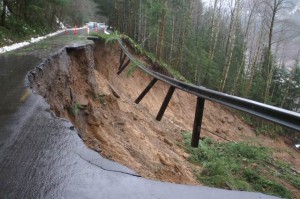Research Papers:
All Roads Lead to Fragmentation: Exploring Habitat Connectivity and Wildlife Underpasses through the Florida Panther and the Jaguar
Abstract: Habitat fragmentation associated with road barrier effects is particularly detrimental for populations of rare, wide-ranging, and low-density wildlife species that require large amounts of land to meet ecological needs. Wildlife crossing structures, however, may serve as artificial habitat connections. Using the Florida panther (Concolor coryi) and the jaguar (Panthera onca) as comparative case studies, this paper explores the potential of wildlife underpasses as effective habitat connections in tropical rainforests. Wildlife underpasses prove to be an effective way to maintain habitat connectivity for jaguars in tropical rainforests, but additional structural components are needed to facilitate broader species use. Proactive integration of wildlife underpasses in transportation management and larger landscape conservation planning will facilitate species movements and mitigate the effects of habitat fragmentation for both species.
Keywords: habitat connectivity, roads, underpasses, Florida panther (Concolor coryi), jaguar (Panthera onca), conservation
Road Construction and Amur Tigers (Panthera tigris altaica) in the Russian Far East
Abstract: Endangered Amur tigers (Panthera tigris altaica), also known as Siberian tigers, live exclusively in the Russian Far East and are currently in danger of extinction. During the past decade, increased road construction has resulted in a road network reaching the Far East region where the last of these tigers remain. This paper reviews trends in road construction and Amur tiger population data over the last several decades and analyzes the relationship between the two. Results show an inverse relationship as road construction has increased and tiger populations have decreased. There is a clear conflict of policies in the Russian government between conservation programs for Amur tigers and plans to expand the road network. This paper emphasizes the need for further research to prevent extinction of the Amur tiger.
Keywords: Amur tiger, Siberia, roads, frontier, conservation, Russia
Existing knowledge, understudied ecosystems, and rapid human development: Can existing research of the environmental impacts of roads on wetlands be applied in the Pantanal?
Abstract: Wetlands, diverse habitats with important conservation value, provide habitat for terrestrial and aquatic organisms in addition to numerous ecosystem services for humans. Roads and road networks negatively affect wetlands because they fragment ecosystems and cause physical and biological changes. Knowledge of the environmental impacts of roads on wetlands is lacking for large, intact, and important wetland ecosystems like the Pantanal region in central South America. This study attempts to gather and analyze studies on road ecology in the temperate wetlands of eastern North America in order to apply this knowledge in the understudied Pantanal. Research conducted in temperate wetlands may provide insight regarding the impacts of roads on habitat connectivity, species richness, and biodiversity in the Pantanal. However, local knowledge of the Pantanal regarding species composition and habitat heterogeneity is critical to understanding the effect of roads on the region. More studies using the framework of road ecology are necessary for wetlands threatened by roads.
Keywords: road ecology, Pantanal, wetlands, Brazil, biodiversity, habitat fragmentation, wildlife corridor
Other Information:
ROADS INCREASE THREAT OF EXTINCTION IN AMUR TIGERS
The Amur tiger (Pantherea tigris altaica), also known as the Siberian tiger, is an endangered sub-species of tiger populating a region of northeast Russia. With only about 400 adults and 100 cubs surviving in the wild to date, organizations such as the Wildlife Conservation Society have increased conservation efforts in order to save these species from extinction. This page on the WCS website focuses on the main threats to the Amur tiger’s survival, such as poaching and illegal hunting of prey, which are both results of the increase in road construction and logging activities.
Kerley, L. L., Goodrich, J. M., Miquelle, D. G., Smirnov, E. N., Quigley, H. B. and Hornocker, M. G. (2002), Effects of Roads and Human Disturbance on Amur Tigers. Conservation Biology, 16: 97–108.
This article is linked below.
Effects of Roads and Human Disturbances on Amur Tigers
ROADS AND BIG CATS: FLORIDA PANTHER CASE STUDY
Unlike Amur tigers in their relatively isolated habitat, Florida panthers (Felis concolor coryi) have been pushed to the margins of their remaining habitat by human population growth and development. This video explores the ways roads, and their associated human impacts, affect this species of endangered large cat. Florida panthers are especially sensitive to the effects of roads, and research and conservation initiatives focus on ways to decrease panther-vehicle collisions, facilitate panther movement, and decrease human-panther interaction.
ROADS THAT ALTER THE PHYSICAL ENVIRONMENT CAN LEAD TO ABRUPT CHANGES IN THE LANDSCAPE
This photograph, taken by Fred Bierlmaier, depicts a recent landslide that took place along US Forest Service road 15 in the Willamette National Forest near Blue River, Oregon. This road provides access to the HJ Andrews experimental forest, a Long-Term Ecological Research site where much of the research regarding the impacts of roads in forested areas of the Pacific Northwest occurs. This research encompasses a wide variety of topics, including the impacts that roads have on watershed and catchment hydrology, dispersal of invasive species, edge effects, and micro-climate heterogeneity. In general, forest service roads in the Pacific Northwest and elsewhere throughout the United States (including Puerto Rico) significantly alter physical and ecological processes.
CLASS PRESENTATION
Roads and Habitat Disturbances

